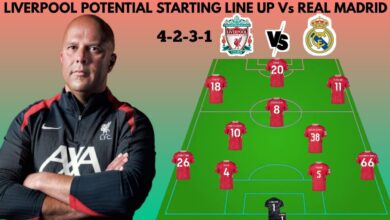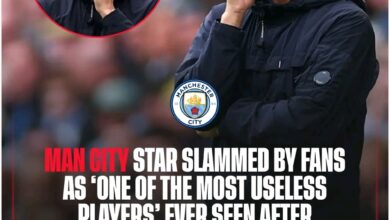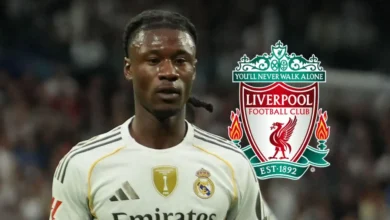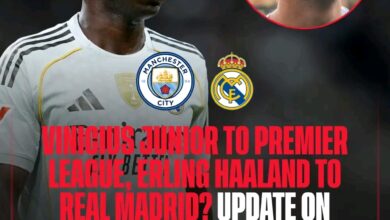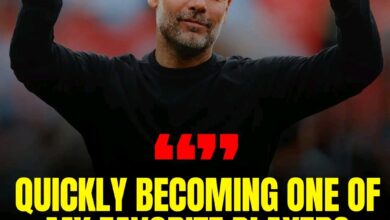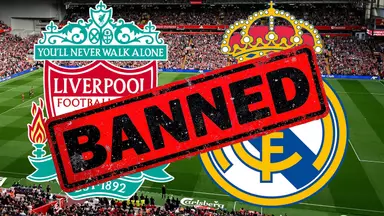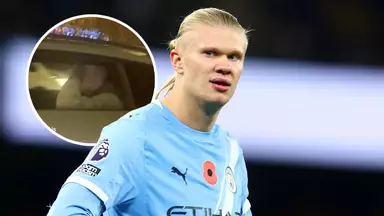Erling Haaland’s Future: Analyzing the Three Clubs That Could Still Tempt Manchester City’s Star Despite Record Contract
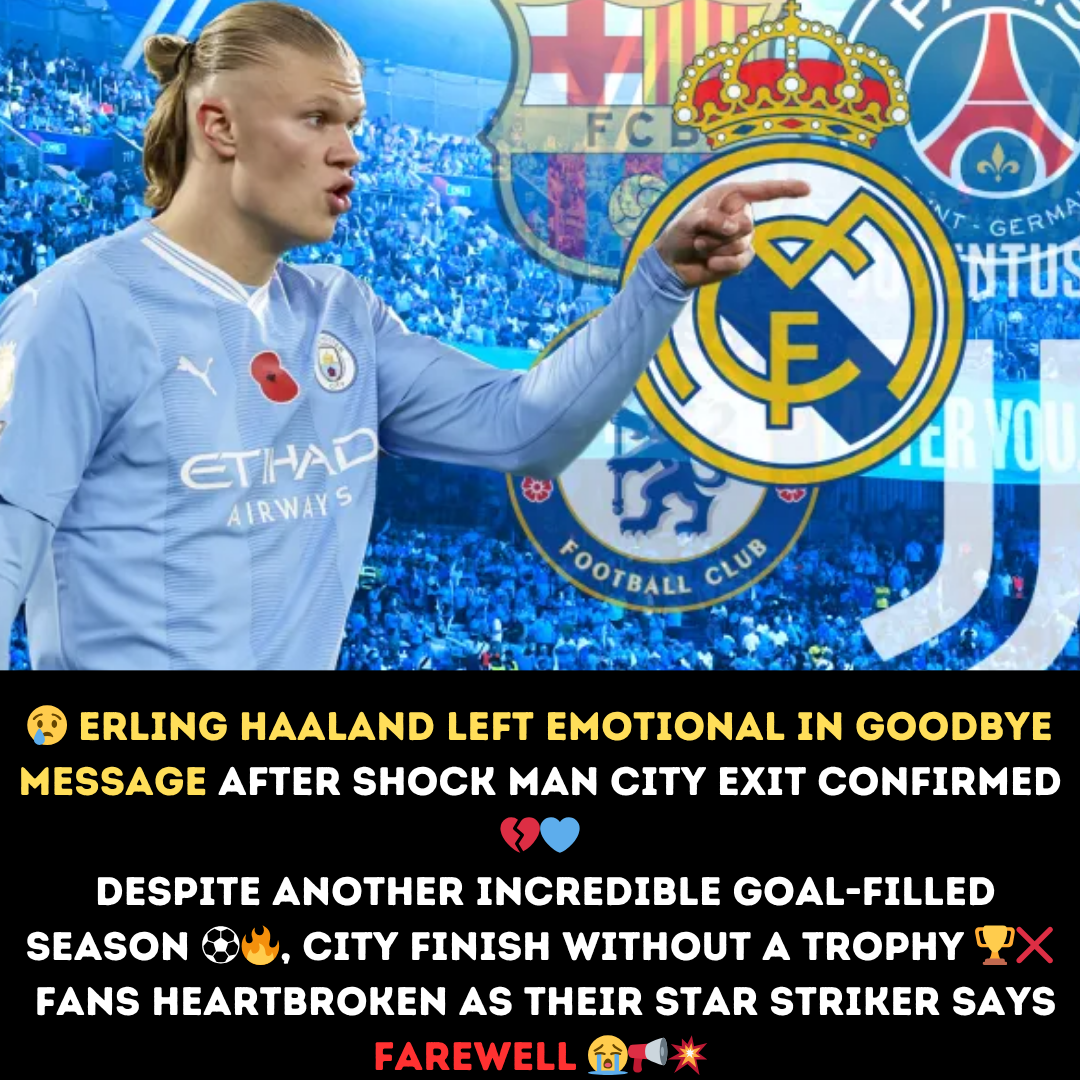
The football world was stunned in January 2025 when Manchester City announced that Erling Haaland had signed an unprecedented 10-year contract extension, securing the Norwegian striker’s services until the summer of 2034. This remarkable deal, the longest in football history, appeared to definitively end speculation about the 24-year-old’s future and cement his legacy at the Etihad Stadium. However, recent reports from Spanish media suggest that despite this historic commitment, Haaland may still retain significant control over his destiny, with three elite European clubs reportedly maintaining interest in the prolific goalscorer.
The Historic Contract and Its Implications
Haaland’s decade-long commitment to Manchester City represents more than just a contractual agreement; it symbolizes the club’s ambition to build their future around one of football’s most devastating forwards. Since arriving from Borussia Dortmund in 2022, the Norwegian has transformed City’s attacking dynamics, bringing a physicality and clinical finishing ability that perfectly complements Pep Guardiola’s tactical philosophy.
The magnitude of this contract cannot be overstated. In an era where even five-year deals are considered long-term commitments, Haaland’s willingness to tie himself to Manchester City for an entire decade speaks volumes about his belief in the project and the club’s vision. The financial terms, while undisclosed, are believed to make him one of the highest-paid players in world football, reflecting both his current ability and his potential for continued growth.
For Manchester City, securing Haaland’s long-term future represents the culmination of years of strategic planning. The club has invested heavily in creating an environment where elite players can thrive, from state-of-the-art training facilities to a coaching staff renowned for developing talent. Haaland’s commitment validates this approach and provides the foundation for sustained success in the coming decade.
The Three Contenders: Europe’s Elite Maintain Interest
Despite the apparent finality of Haaland’s contract extension, reports from Marca and other Spanish outlets suggest that three clubs continue to monitor his situation closely. These institutions – Real Madrid, Barcelona, and Paris Saint-Germain – represent the pinnacle of European football and possess the resources, prestige, and ambition necessary to potentially tempt even the most committed players.
Real Madrid: The Galactico Dream Continues
Real Madrid’s interest in Haaland predates his move to Manchester City and reflects their long-standing policy of acquiring the world’s best players. Los Blancos have built their modern identity around the concept of Galacticos – superstar signings who combine exceptional ability with global marketability. Haaland, with his imposing physical presence, goal-scoring prowess, and commercial appeal, fits this profile perfectly.
The Spanish giants have a proven track record of successfully pursuing players who initially seemed unattainable. From Luis Figo’s controversial move from Barcelona to Cristiano Ronaldo’s departure from Manchester United, Real Madrid has consistently demonstrated their ability to convince elite players to join their project. Their recent success in the Champions League, combined with their status as the world’s most successful club in the competition, provides a compelling argument for any player with global ambitions.
However, Real Madrid faces significant obstacles in any potential pursuit of Haaland. The club’s financial situation, while stable, has been impacted by recent stadium renovations and the need to balance their books in accordance with Financial Fair Play regulations. The acquisition of Haaland would require not just an enormous transfer fee but also wages that would likely exceed their current salary structure. This would necessitate substantial player sales, potentially disrupting the squad harmony that has been crucial to their recent success.
Furthermore, Real Madrid’s current attacking setup, featuring established stars and emerging talents, would need significant restructuring to accommodate Haaland’s arrival. The tactical adjustments required and the potential displacement of existing players could create internal challenges that the club would need to carefully manage.
Barcelona: Financial Constraints vs. Football Dreams
Barcelona’s inclusion among Haaland’s potential destinations reflects both their historical prestige and their ongoing ambition to return to the pinnacle of world football. The Catalan club has endured several challenging years marked by financial difficulties, boardroom instability, and relative underachievement on the pitch. However, their recent revival under various coaching regimes and their commitment to rebuilding suggests they remain a force to be reckoned with.
The appeal of Barcelona for a player like Haaland extends beyond immediate success. The club’s philosophy, deeply rooted in attractive, attacking football, could provide the perfect stage for the Norwegian to showcase his abilities. Barcelona’s home, the Camp Nou, represents one of football’s most iconic venues, and the opportunity to become the focal point of their revival could prove irresistible to a player with Haaland’s ambitions.
However, Barcelona’s financial constraints present perhaps the most significant obstacle to any potential deal. The club’s well-documented struggles with debt and their need to comply with La Liga’s salary cap regulations would make the acquisition of a player of Haaland’s caliber extremely challenging. Even if they could structure a deal that satisfied Manchester City, the ongoing financial implications of such a signing could jeopardize their long-term stability.
Despite these challenges, Barcelona’s history of finding creative solutions to seemingly impossible situations should not be underestimated. Their ability to restructure contracts, negotiate deferred payments, and leverage their global brand could potentially create pathways to major signings that initially appear unfeasible.
Paris Saint-Germain: Unlimited Resources and Global Ambition
Paris Saint-Germain represents perhaps the most realistic option among the three clubs, primarily due to their financial resources and willingness to invest heavily in marquee signings. The French club has consistently demonstrated their ability to compete for the world’s best players, as evidenced by their successful recruitment of Neymar, Kylian Mbappé, and Lionel Messi in recent years.
PSG’s project, backed by significant investment, aims to establish the club as a global powerhouse capable of competing with Europe’s traditional elite. The acquisition of Haaland would represent a statement of intent and provide the focal point for their attacking ambitions. The prospect of playing alongside other world-class talents in one of Europe’s most competitive leagues could appeal to a player seeking new challenges and experiences.
The French capital’s lifestyle and cultural attractions, combined with PSG’s state-of-the-art facilities and competitive salary structure, create an appealing package for elite players. The club’s commitment to success, evidenced by their consistent investment in player recruitment and infrastructure, demonstrates their serious intent to compete at the highest level.
However, PSG faces their own unique challenges in pursuing Haaland. The club’s relationship with Financial Fair Play regulations has been complex, and any major signing would need to be carefully structured to avoid potential sanctions. Additionally, the competitive balance within Ligue 1, while improving, may not provide the consistent high-level competition that a player of Haaland’s caliber seeks.
The Control Factor: Player Power in Modern Football
The suggestion that Haaland retains control over his future despite signing a long-term contract reflects the evolving dynamics of modern football. Elite players increasingly negotiate clauses that provide flexibility and ensure they maintain influence over their careers, even when committing to extended deals. These provisions can take various forms, from release clauses activated under specific conditions to gentleman’s agreements that allow departures under certain circumstances.
For Manchester City, accommodating such provisions represents a calculated risk. While they secure Haaland’s services for the foreseeable future, they also acknowledge that football careers are unpredictable and that circumstances can change rapidly. By potentially allowing Haaland some degree of control over his future, City demonstrates their understanding of modern player expectations while protecting their investment.
This approach reflects a broader trend in football where clubs must balance their desire for security with players’ demands for flexibility. The most successful relationships often involve mutual respect and understanding, with both parties working together to achieve their respective objectives.
Manchester City’s Strategic Position
From Manchester City’s perspective, Haaland’s long-term commitment provides the foundation for sustained success and strategic planning. The club can build their tactical approach, recruitment strategy, and commercial partnerships around the certainty of having one of the world’s best strikers for the next decade. This stability is invaluable in an era of constant change and uncertainty.
The financial implications of Haaland’s contract extension also work in City’s favor. By securing his services now, they avoid the inflation that would inevitably accompany any future transfer negotiations. The investment, while substantial, provides excellent value when considered over the contract’s duration and the potential returns in terms of success and commercial revenue.
Furthermore, Haaland’s commitment sends a powerful message to other potential signings and existing players about the club’s ambitions and stability. This can create a positive cycle where success attracts further talent, reinforcing the club’s position among Europe’s elite.
The Broader Context: Football’s Evolving Landscape
Haaland’s situation must be understood within the broader context of modern football’s evolving landscape. The game has become increasingly globalized, with players viewing their careers as international journeys rather than commitments to single clubs. This perspective is particularly prevalent among elite players who have the luxury of choice and the ambition to experience different leagues and cultures.
The financial aspects of modern football also play a crucial role in these dynamics. Transfer fees and wages have reached unprecedented levels, creating situations where even the most committed relationships can be tested by extraordinary offers. Clubs must navigate these realities while attempting to build sustainable, successful projects.
Additionally, the competitive balance between Europe’s top leagues continues to evolve, with different competitions offering unique challenges and rewards. A player like Haaland, having already experienced the Bundesliga and Premier League, might naturally be curious about testing himself in La Liga or Ligue 1.
Future Implications and Considerations
Looking ahead, several factors will influence Haaland’s long-term future and the potential for movement despite his current contract. Manchester City’s continued success and their ability to provide the platform for his ambitions will be crucial in maintaining his commitment. Should the club experience a period of decline or fail to compete for major honors, the appeal of alternative destinations could increase significantly.
The evolution of the three interested clubs will also play a role. Real Madrid’s potential return to transfer market prominence, Barcelona’s financial recovery, or PSG’s continued investment could create opportunities that don’t currently exist. Football’s unpredictable nature means that circumstances can change rapidly, opening doors that previously seemed closed.
Haaland’s own development and changing priorities will be equally important. As he matures and gains experience, his perspective on success, legacy, and personal fulfillment may evolve. The desire to experience different cultures, leagues, or tactical approaches could eventually outweigh the security and familiarity of his current situation.
Conclusion
Erling Haaland’s record-breaking contract with Manchester City represents a landmark moment in modern football, demonstrating the lengths to which elite clubs will go to secure generational talent. However, the suggestion that he retains some control over his future, with Real Madrid, Barcelona, and Paris Saint-Germain maintaining interest, reflects the complex realities of contemporary player relationships.
While Haaland’s immediate future appears secure at the Etihad Stadium, the football world’s dynamic nature ensures that speculation about his long-term destination will persist. The three clubs mentioned each offer unique appeals and face distinct challenges in any potential pursuit. Real Madrid provides history and prestige but faces financial constraints; Barcelona offers philosophy and culture but struggles with economic limitations; PSG presents resources and ambition but questions about competitive environment remain.
For now, Manchester City can take satisfaction in securing one of football’s most coveted assets for an unprecedented period. However, they must continue to provide the success, support, and ambition necessary to maintain Haaland’s commitment. In an era where player power continues to grow and football’s landscape constantly evolves, even the most secure situations can change rapidly.
The coming years will reveal whether Haaland’s Manchester City journey represents a lifelong commitment or merely the next chapter in what could become a storied career across Europe’s elite clubs. Regardless of the outcome, his current contract stands as a testament to both his exceptional ability and the evolving nature of modern football relationships.







